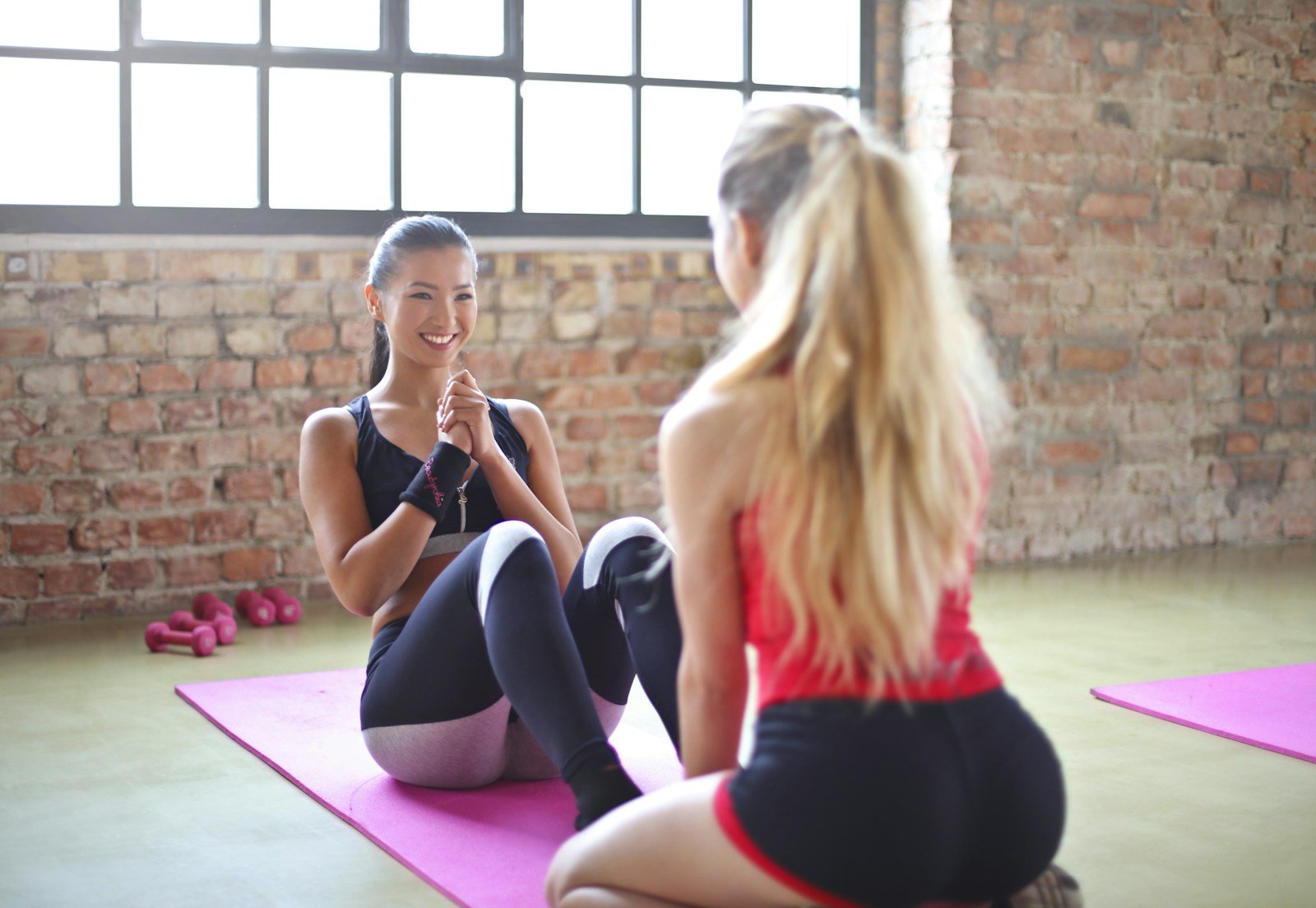Introduction to Body Transformation
Body transformation is a comprehensive process that involves significant changes in physical fitness, strength, and overall health. It requires a structured plan, dedication, and consistency to achieve noticeable results. Within a four-week period, it is possible to see substantial improvements in your physique and overall well-being by following a well-rounded fitness routine. This timeframe is optimal because it provides a clear, short-term goal that can keep you motivated while being long enough to make tangible progress.
Consistency is crucial in any body transformation journey. Engaging in regular exercise and maintaining a balanced diet will help to ensure that your efforts yield the desired outcomes. Dedication to your routine means committing to the exercises and not skipping sessions, even when it becomes challenging. The right set of exercises, tailored to your fitness level and goals, is essential for targeting different muscle groups and improving various aspects of physical fitness.
A well-rounded fitness routine encompasses more than just building muscle. It includes exercises that enhance strength, flexibility, and cardiovascular health. Strength training exercises help in building and toning muscle, which can lead to a more defined appearance. Flexibility exercises, such as stretching and yoga, improve the range of motion and prevent injuries. Cardiovascular exercises, like running or cycling, boost heart health and increase endurance. Together, these components contribute to a holistic approach to transforming your body.
Embarking on a body transformation program involves more than just physical changes; it can also lead to improved mental health. Regular exercise releases endorphins, which can reduce stress and enhance mood. Additionally, achieving fitness goals can boost self-confidence and provide a sense of accomplishment. Therefore, committing to a four-week body transformation plan can be a highly rewarding endeavor, offering benefits that extend beyond the physical to enhance overall quality of life.
Exercise 1: Squats
Squats are a fundamental exercise that can significantly transform your body by building lower body strength and enhancing core stability. Not only do they target the quadriceps, hamstrings, and glutes, but they also engage the core muscles, contributing to a stronger and more stable midsection.
To perform a proper squat, follow these steps:
1. Stance: Stand with your feet shoulder-width apart. Your toes should slightly point outwards. This position ensures stability and allows for a full range of motion.
2. Movement: Begin by pushing your hips back as if you are about to sit in a chair. Bend your knees and lower your body, keeping your chest up and your back straight. Ensure your knees track over your toes and do not cave inwards.
3. Depth: Lower yourself until your thighs are parallel to the ground or as low as your flexibility allows. The goal is to maintain proper form without compromising your lower back.
4. Ascent: Drive through your heels to return to the starting position. Squeeze your glutes at the top of the movement for maximum benefit.
5. Breathing: Inhale as you lower your body and exhale as you push back up.
For added challenge and variety, consider incorporating variations such as goblet squats or jump squats into your routine. Goblet squats involve holding a weight close to your chest, which adds resistance and helps maintain an upright posture. Jump squats, on the other hand, add a plyometric element, increasing cardiovascular intensity and muscle power.
For optimal results, aim to perform squats 2-3 times per week. Start with 3 sets of 10-15 repetitions, adjusting the number of sets and reps based on your fitness level and goals. As you become more comfortable with the movement, you can gradually increase the weight and complexity of the variations to continue challenging your body and achieving transformative results.
Exercise 2: Push-Ups
Push-ups are a highly effective exercise to transform your upper body, specifically targeting the chest, shoulders, and triceps. This compound movement engages multiple muscle groups, making it a staple in strength training routines. To perform a standard push-up, start in a high plank position with your hands slightly wider than shoulder-width apart. Keep your body in a straight line from head to heels, engaging your core muscles to maintain stability. Lower your body until your chest nearly touches the ground, ensuring your elbows form a 45-degree angle with your torso. Push through your palms to return to the starting position.
Proper form is crucial to maximize the benefits and minimize the risk of injury. Avoid letting your hips sag or your back arch, as this can place undue stress on your lower back. Keep your neck neutral, looking slightly ahead rather than down. If you’re new to push-ups or find the standard form too challenging, start with knee push-ups. This variation reduces the load on your upper body while still providing a good workout. Alternatively, incline push-ups, performed with your hands on an elevated surface like a bench or step, can also lessen the difficulty while maintaining proper form.
For those seeking to intensify their push-up routine, there are several ways to progressively increase difficulty. Diamond push-ups, where your hands are placed close together forming a diamond shape, target the triceps more intensely. Decline push-ups, with your feet elevated on a raised surface, shift more weight onto your upper body, increasing the challenge. Plyometric push-ups, involving a push-off from the ground, can also add a dynamic element to your workout, enhancing power and explosiveness.
Gradually increasing the number of repetitions and sets, or incorporating these variations, can help continually challenge your muscles and promote growth. Consistent practice of push-ups, with attention to form and progressive overload, can significantly enhance your upper body strength over the course of four weeks.
Exercise 3: Planks
Planks are a fundamental exercise that can significantly transform your body by enhancing core strength, which plays a crucial role in overall stability and posture. By incorporating planks into your routine, you can expect to see improvements in your core muscles, which are essential for various daily activities and other physical exercises.
To perform a standard plank, start by positioning yourself face down on the floor. Prop your body up on your forearms and toes, ensuring that your elbows are directly beneath your shoulders. Your body should form a straight line from head to heels, avoiding any sagging or arching in the back. Engage your core muscles by pulling your belly button towards your spine, and maintain a neutral neck position by looking down at the floor. Breathe steadily, inhaling through your nose and exhaling through your mouth, to maintain stability and focus.
For those seeking to add variety and challenge to their plank routine, consider incorporating variations such as side planks and plank jacks. A side plank involves turning to one side, balancing on one forearm and the side of one foot, while keeping the body in a straight alignment. This variation targets the oblique muscles and improves lateral stability. Plank jacks, on the other hand, combine the plank position with a jumping jack motion. Begin in a standard plank and then jump your feet out wide and back together, all while maintaining a solid plank form. This dynamic movement increases cardiovascular engagement and adds an element of agility to the exercise.
For optimal results, aim to hold a standard plank for 30 to 60 seconds, gradually increasing the duration as your core strength improves. Include planks in your routine three to four times a week, ensuring you perform each variation to engage different muscle groups effectively. By dedicating time to planks, you will not only transform your body but also enhance your overall stability and posture.
Exercise 4: Lunges
Lunges are an excellent exercise to transform your body, particularly by enhancing leg strength and balance. They target multiple muscle groups including the quadriceps, hamstrings, glutes, and calves, making them a comprehensive lower-body workout. By incorporating lunges into your routine, you can develop better stability and coordination, crucial for overall athletic performance and daily activities.
To perform a basic lunge correctly, start by standing tall with your feet hip-width apart. Take a step forward with your right foot and lower your body until your right thigh is parallel to the ground, ensuring your knee does not extend past your toes. Your left knee should hover just above the floor. Push through your right heel to return to the starting position. Repeat on the other side. Maintain an upright torso and engage your core throughout the movement to prevent leaning forward.
There are several variations of lunges to keep your workouts diverse and challenging. Walking lunges involve taking a step forward with each lunge, which adds a dynamic element and engages additional stabilizer muscles. Reverse lunges, where you step backward instead of forward, are gentler on the knees and can help improve balance. Other variations include side lunges and curtsy lunges, each targeting different muscle groups and movement patterns.
For beginners, start with 2-3 sets of 10-12 reps for each leg. As your strength and balance improve, gradually increase the number of sets and reps. To further intensify the exercise, consider adding weights such as dumbbells or a barbell. Always prioritize maintaining proper form over increasing intensity to prevent injury and ensure optimal muscle engagement.
Incorporating lunges into your exercise regimen can significantly contribute to transforming your body. With consistent practice and progressive overload, you will notice substantial improvements in leg strength, balance, and overall lower-body conditioning.
Exercise 5: Burpees
Burpees are an exceptional full-body exercise that can significantly transform your body by engaging multiple muscle groups simultaneously and boosting cardiovascular fitness. This dynamic movement combines strength, agility, and endurance, making it a staple in high-intensity interval training (HIIT) routines.
To perform a burpee correctly, follow these steps:
1. Start in a standing position with your feet shoulder-width apart.
2. Lower into a squat position, placing your hands on the floor in front of you.
3. Kick your feet back into a plank position, ensuring your body forms a straight line from head to heels.
4. Perform a push-up, keeping your core engaged and maintaining proper form.
5. Jump your feet back to the squat position.
6. Explosively jump into the air, reaching your arms overhead. Land softly and immediately go into the next repetition.
Proper form is crucial when doing burpees to prevent injury. Ensure your back remains straight during the plank and push-up phases, and avoid letting your hips sag or pike. Engage your core throughout the movement to maintain stability and protect your lower back.
For beginners, modifications can include stepping back into the plank position instead of jumping, or eliminating the push-up and jump phases to simplify the exercise. As you build strength and endurance, you can increase the intensity by adding a tuck jump at the end or performing burpees with a weighted vest.
To incorporate burpees into your workout, aim for 3 sets of 10-15 repetitions. As you become more comfortable and your fitness level improves, you can increase the number of sets or repetitions, or integrate them into a HIIT routine for maximum cardiovascular benefits.
By consistently including burpees in your fitness regimen, you can transform your body, enhancing both strength and cardiovascular health in just a few weeks.
Exercise 6: Glute Bridges
Glute bridges are a highly effective exercise that can significantly transform your body by strengthening the glutes, lower back, and hamstrings. This exercise not only helps in building muscle strength but also improves posture, enhances stability, and reduces the risk of lower back pain. Performing glute bridges correctly is crucial to maximize their benefits and prevent any potential injuries.
To perform a standard glute bridge, start by lying on your back with your knees bent and feet flat on the floor, hip-width apart. Place your arms by your sides with palms facing down. Engage your core and squeeze your glutes as you lift your hips towards the ceiling, creating a straight line from your shoulders to your knees. Hold the position for a few seconds before slowly lowering your hips back to the starting position. Ensure your movement is controlled and deliberate, and avoid arching your lower back. Focus on breathing steadily, inhaling as you lower your hips and exhaling as you lift.
There are several variations of the glute bridge that can further enhance its impact. Single-leg glute bridges involve lifting one leg off the ground while performing the exercise, which increases the challenge and promotes even greater glute activation. Elevated glute bridges, where your feet are placed on an elevated surface such as a bench or step, can also intensify the workout and engage the muscles more deeply.
For optimal results, incorporate glute bridges into your workout routine 2 to 3 times per week. Aim for 3 sets of 12 to 15 repetitions, gradually increasing the intensity by adding weight or trying advanced variations as your strength improves. Consistency and proper form are key to transforming your body effectively with this exercise.
Exercise 7: Mountain Climbers
Mountain climbers are a dynamic, high-intensity exercise that can significantly enhance your cardiovascular fitness and core strength. This full-body workout engages multiple muscle groups simultaneously, making it an efficient addition to any fitness regimen aimed at transforming the body.
To perform mountain climbers correctly, follow these steps:
1. Begin in a high plank position with your hands directly under your shoulders, your body forming a straight line from head to heels.
2. Engage your core to maintain stability as you lift your right knee toward your chest.
3. Quickly switch legs, bringing your left knee toward your chest while simultaneously extending your right leg back to the starting position.
4. Continue to alternate legs in a running motion, keeping your hips low and your core engaged throughout the exercise.
For those looking to keep the exercise challenging, consider incorporating variations such as:
Slow Mountain Climbers: Perform the movement at a slower pace, focusing on engaging the core muscles and maintaining proper form. This variation emphasizes strength over speed, allowing for greater control and muscle activation.
Cross-Body Mountain Climbers: Instead of bringing your knees straight toward your chest, drive each knee toward the opposite elbow. This variation adds a rotational element, engaging the obliques and enhancing overall core stability.
To effectively integrate mountain climbers into your workout routine, aim for 3-4 sets of 30-60 seconds each, adjusting the duration based on your fitness level. Ensure to maintain proper form throughout to prevent injury and maximize the benefits of this transformative exercise.
Conclusion and Tips for Success
The journey to transform your body in just 4 weeks is an ambitious yet achievable goal. Throughout this blog post, we have discussed seven key exercises that play a pivotal role in reshaping and strengthening your physique. Each exercise—whether it be squats, push-ups, planks, burpees, lunges, mountain climbers, or crunches—has its unique benefits and targets different muscle groups, contributing to a holistic body transformation.
Consistency is crucial for seeing tangible results. Committing to a regular workout schedule and progressively increasing the intensity of your exercises will help in maximizing your progress. Equally important is maintaining a balanced diet. Consuming nutrient-dense foods that provide ample protein, healthy fats, and complex carbohydrates will fuel your workouts and aid in muscle recovery and growth. Staying hydrated is another essential aspect; water helps to keep your metabolism active and muscles functioning optimally.
Adequate rest is vital for the body’s recovery process. Ensure you get enough sleep each night and allow your muscles to recuperate between intense workout sessions. This balance between activity and rest will prevent injuries and promote sustained progress.
Patience and perseverance are key. Body transformation is not an overnight process; it requires dedication and time. Setting realistic goals and tracking your progress can help keep you motivated. Celebrate small milestones along the way, as each step brings you closer to your ultimate goal.
Lastly, stay positive and surround yourself with supportive individuals who can encourage and inspire you. Remember, the journey to transform your body is as much mental as it is physical. With commitment, the right mindset, and the execution of these exercises, you are well on your way to achieving a remarkable transformation in just four weeks.











